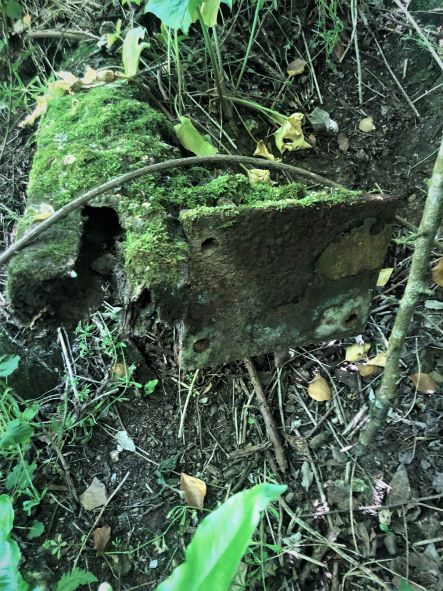The Manor House of Bovey is located at the head of a long coombe leading down to Beer, East Devon
| Name | Occupation | Posted from | Until |
|---|---|---|---|
| Sergeant Frederick James Bastone | Fruiterer |
04 Jul 1940 | 03 Dec 1944 |
| Sergeant Leonard Charles Pike | Tractor driver |
24 Jul 1940 | 03 Dec 1944 |
| Corporal Walter Henry Denslow | Farm worker |
24 Jul 1940 | 03 Dec 1944 |
| Private Herbert Kittow Cligg | Farm worker |
21 Jul 1940 | 03 Dec 1944 |
| Private Charles Luke Denslow | Dairyman |
24 Jul 1940 | 03 Dec 1944 |
| Private Richard Edgar Iles | AA Motor mechanic |
28 Nov 1942 | 03 Dec 1944 |
| Private Harold Frederick Pike | Milk roundsman |
24 Jul 1940 | 03 Dec 1944 |
| Private Edwin Reginald Pike | Carter |
09 Sep 1940 | 03 Dec 1944 |
| Private George Tyson Salter | Farm worker |
Unknown | Unknown |
| Private Edward John Sexton | Builder's lorry driver |
06 Jul 1940 | 03 Dec 1944 |
Walter Denslow's written testimony and interview transcript both point to there being two Operational Bases. One in Morganhayes Cover about one mile away from Bovey House and one, possibly a cave, near Hangman's Stone around 0.5 miles from Bovey House.
There is a picture of Charlie Denslow emerging out of the entrance of the Operational Base, possibly at Morganhayes Cover, with another showing the interior. These are likely to have been taken in the 1960's. The Operational Base was dug-out and filled-in by the landowner with virtually no sign of it remaining, other than some brick-work and corrugated iron on the surface.
The Hangman's Stone Operational Base has yet to be discovered.
Bovey Patrol
Targets presumably would have included the old A35, a key route in and out of the South West during the war. There is also the possibility that Bovey House would have been been requisitioned by the Germans as happened in occupied Europe, making the place where many of the Patrol worked a target.
RAF Beer Head, a Chain Home Low radar station consisted of a 200 foot high tower with technical buildings, a cook house and billets for the guards. These were often targets for Auxiliary Units.
In George Salter's transcript of a recorded conversation from 2005, he recounts attending Coleshill but also practicing and setting up booby traps in a group of derelict buildings at Higher Gatcombe Farm between Holyford Wood and the A3052 (now demolished).
He also mentions blowing up old farm machinery!
It is assumed they were issued with the standard kit, arms and explosives.
All of the Bovey Patrol worked on the Bovey Estate.
In the book Colyton at War by Geoff Elliott, Frank Soanes recalls; "There was a simulated attack by the Home Guard special services, these were mainly fit and strong farmers, that were trained better than us. In the event of an invasion, they were meant to act like commandos, causing much havoc. They had secret dug outs, like the buried Nissen hut at Morganhayes".
In the enrolment letter sent to Richard Iles from Group Commander Lieutenant Howes, dated 28 Nov 1942, Howes calls this Patrol "Stafford Common Patrol". He also notes Sergeant Bastone is the Patrol Leader. As Leonard Pike and Bastone are both recorded as Patrol Leaders at stand down on the list compiled by Major Hancock there is some confusion over who was in command of this Patrol and at what time. Both live very near to the OB and both are remembered as being associated with the Patrol. One of them may have moved on to create a new Patrol though both address are still recorded in Beer and Bovey at stand down.
As some of the 9 Patrols within Group 6 in East Devon were based very close together there maybe some confusion over Auxiliers and their exact Patrols.
Ralph Cox
TNA ref WO199/3391
Hancock data held at B.R.A
Written and recorded testimony from Walter Denslow and George Salter.
Colyton Parish History Society and Colyton at War by Geoff Elliott
The History Department of Colyton Grammar School
The late Richard Iles
1939 Register
Ian White








